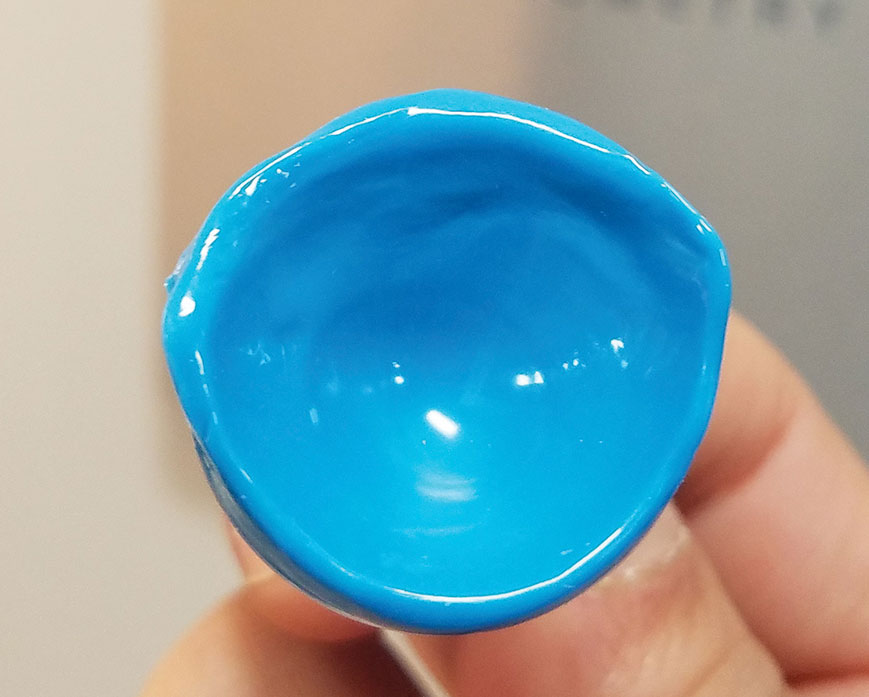Today, patients have an ever-increasing list of inexpensive options to choose from when it comes to buying their contact lenses—from online behemoth 1-800 Contacts to the recently launched Hubble that promises the first box of daily disposable lenses will be free. And most ODs agree that trying to compete with these bargain venues on price alone is a losing battle.
Instead, experts say you should focus on what these retailors can’t provide: quality care. For contact lens fitters, this includes providing specialty contact lenses that require more time and attention to fit, such as torics, multifocals, toric multifocals, sclerals, gas permeables (GPs) and hybrids. If you build a thriving practice of patients wearing these lens types, those patients will feel more loyal to you and will be less inclined to shop around for the best deal.
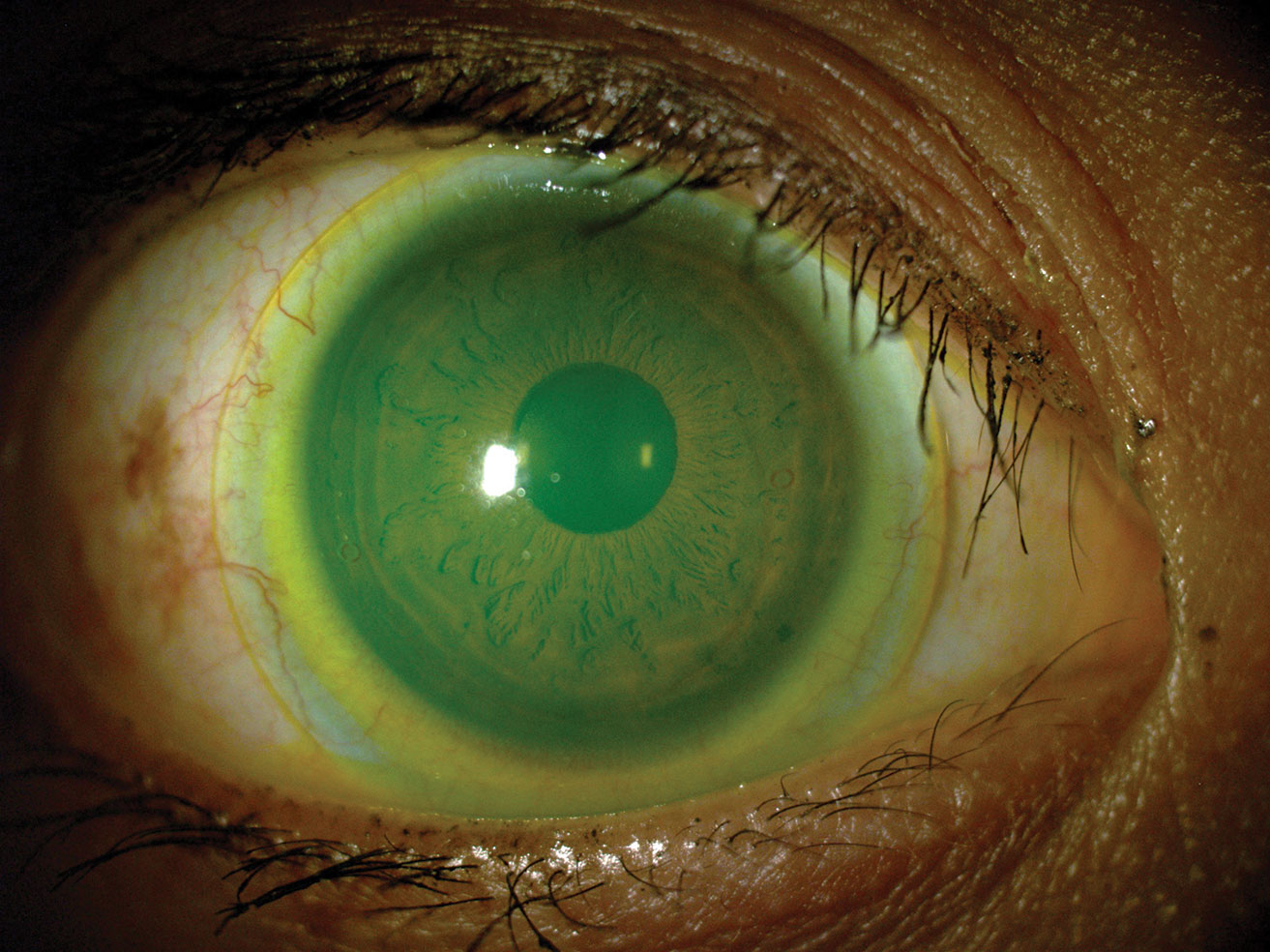 |
| A specialty lens, such as this mini-scleral, may be a good option for your patient with high corneal astigmatism—and one only you can prescribe. Photo: Robert Ensley, OD. Click image to enlarge. |
“In the last decade, there has been an incredible increase in lens parameters that are available for our patients, but I often hear optometrists mention they are hesitant to start the fitting process with these lens types because they are viewed as more difficult or more time consuming,” says Andrew Fischer, OD, of Specialty Eyecare Group in Kirkland, WA. “This may be true, but investing the time to achieve a successful fit with a multifocal or toric lens can pay off many times over.”
Specialty lens wearers, especially multifocal-wearing presbyopes, are often long-term patients, and they are a “fantastic referral source” as well, Dr. Fischer explains.
Still, specialty lenses remain an untapped opportunity for many. A 2015 Gallup study of the US multifocal contact lens market found 42% of patients between the ages of 40 and 54—and 38% of those aged 55 to 64—have expressed some interest in multifocal contact lenses.1 Despite this growing need, just slightly more than half of eye care professionals start a conversation about innovative contact lenses, and 91% of practitioners fit less than 20% of soft multifocal lenses.1,2 Even during a multifocal lens conversation, only 15% of clinicians reported they present the lenses enthusiastically to their patients, while 48% said they offer warnings about the lenses’ downsides before the patients have even tried them.2,3
Here, your colleagues offer insight on how specialty lenses can help your practice gain a leg up on the competition, in addition to some “do’s and don’ts” on how to best get your patients into a specialty lens.
Stand Out With a Specialty Lens PracticeAfter selling his practice to a private equity affiliate more than two years ago and buying an existing practice in central San Diego, Dr. Chou decided to shift his focus to specialty contact lens prescribing. Since then, he’s grown to love Walmart, Costco, LensCrafters and other retail competitors he previously faced at his former group optometric practice. Because Dr. Chou’s new office caters to specialty lens patients, with an emphasis on scleral lens prescribing and keratoconus and irregular cornea patients, the big box stores and retail chains refer him their hard-to-manage contact lens patients, and the relationship is paying off in dividends. He still does general eye exams, but most of his patients are wearing specialty lenses. Dr. Chou treats any and all corneal complications, including keratoconus and corneal transplant patients, and he fits scleral and prosthetic contact lenses in addition to impression scleral cover shells with EyePrint Pro (EyePrint Prosthetics) and corneal refractive therapy. Although he doesn’t think there are enough patients with irregular corneas to support a thriving specialty contact lens practice for every OD, Dr. Chou still encourages others to delve into a specialty, such as myopia control or dry eye, to diversify their practice from mercantile optometry “I am pleased with the outcome. Most optometrists will admit there are a lot of competitive threats ranging from online refraction to Hubble. Now my practice coexists in this ecosystem where all these other entities are too,” Dr. Chou says. A Caveat “While a specialty practice is ideal, it is impossible for the average OD to have one,” says Justin Bazan, OD, of Park Slope Eye in Brooklyn, NY. “You add specialty fits to your existing contact lens services, but there simply aren’t enough specialty patients to sustain a practice that only does specialty fits. You will have to compete with online retailers, not necessarily on price, but you will have to compete for the sale of soft contact lenses.” Still, expertise in this area can give you a competitive edge over other practices, as many patients, even those with general needs, may feel like they are in better hands when seeing a “specialist.”
|
Play the Loyalty Card
Patients in specialty lenses are more apt to purchase lenses from their doctor, says Jason Miller, OD, of EyeCare Professionals of Powell, Ohio. The fact that the doctor has taken more time to find the best fitting lens or the right combination likely weighs into a patient’s decision on whether or not to search for a better price, he adds.
“I don’t really like to consider I’m competing with companies like 1-800 just in price, because I can beat them with in-person service,” he explains. “By offering great service and advanced technologies like specialty lenses at a good price, it certainly helps swing that competitive edge toward the practice.”
Specialty lenses—such as sclerals, GPs, custom torics and hybrids—require a greater emphasis on the relationship between the patient and the doctor, not the product, says Brian Chou, OD, owner of a specialty contact lens practice, ReVision Optometry, in San Diego.
“The commodity world of disposable contacts is inhabited by a very strong brand-centric emphasis on the product, where the patients develop a loyalty to the brand and the product, not the services or the doctor,” Dr. Chou says. If patients see their contact lenses as a commodity, online marketers are likely to amplify the perception that the doctor is not a necessary part of the puzzle, he adds.
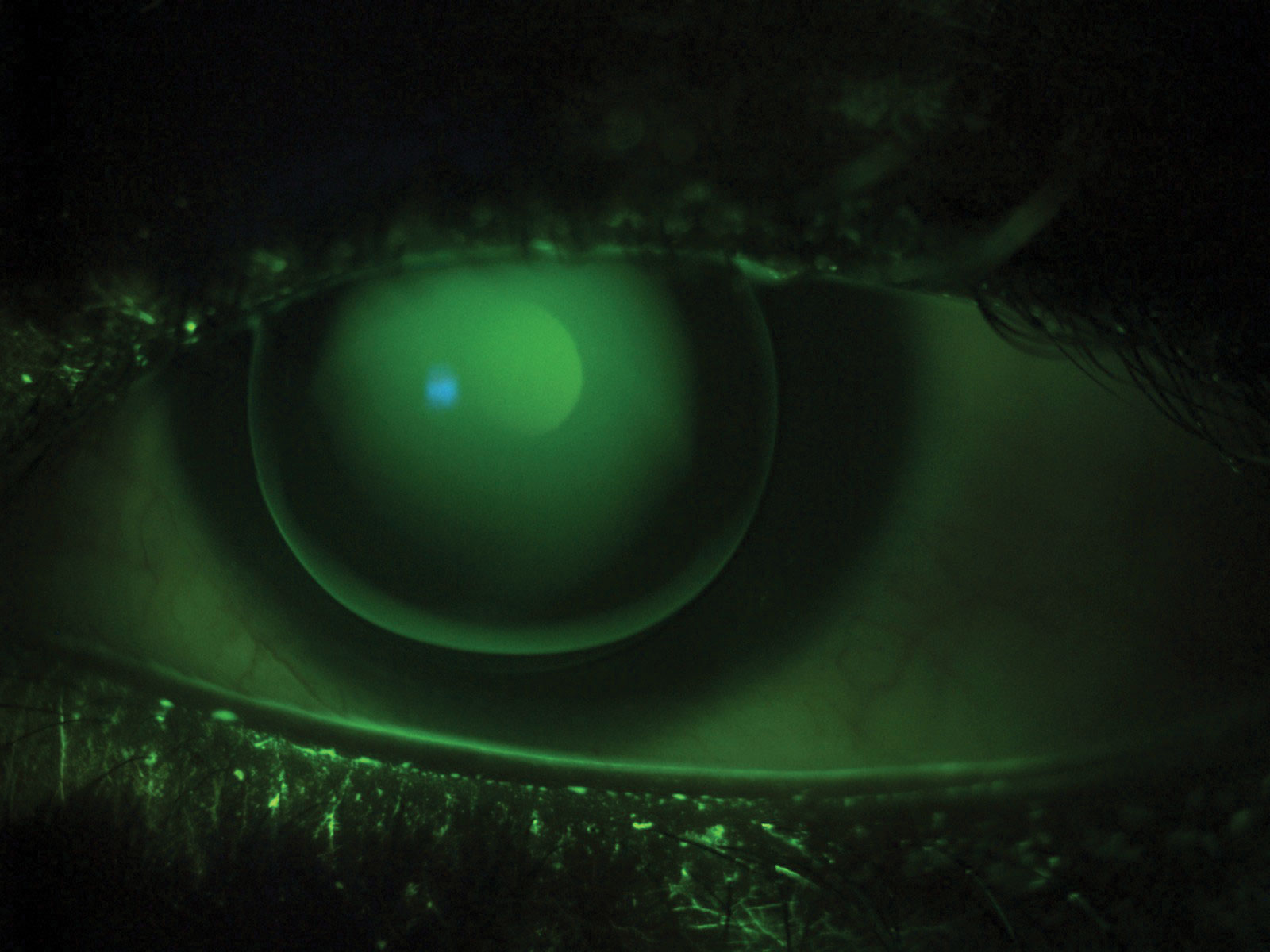 |
| Patients with a high amount of astigmatism may not know they can achieve better vision with a well-fitting GP until you educate them. Photo: Irene Frantzis, OD. Click image to enlarge. |
Dr. Chou gives the example of a patient who wears a popular single-vision daily disposable. “If you ask the patient the reason behind their wearing success in many of these disposable lenses, the patient will often say it’s the brand, and in this case, it doesn’t matter who prescribes it. The patient will just go to the lowest cost provider.”
In this scenario, patients see the doctor as a third wheel interfering with their access, because the focus is on cost and convenience, not the care, Dr. Chou says.
Specialty contact lenses, however, often require tremendous expertise, beginning with the identification of good candidates.
“Patients won’t come into the office asking for a front-surface toric prism ballasted scleral contact lens,” Dr. Chou explains.
Instead, they usually say they want a certain brand of soft lenses. It’s up to you to notice they might do well in another, more specialized, lens and offer that option.
Dr. Fischer finds patients will acknowledge and appreciate the extra time it takes to achieve a perfect fit in more complicated lenses, which often helps with loyalty. Custom soft lenses, sclerals, corneal GP lenses and orthokeratology designs often need two or more lens orders and evaluations on the eye before finalizing a lens prescription, he explains.
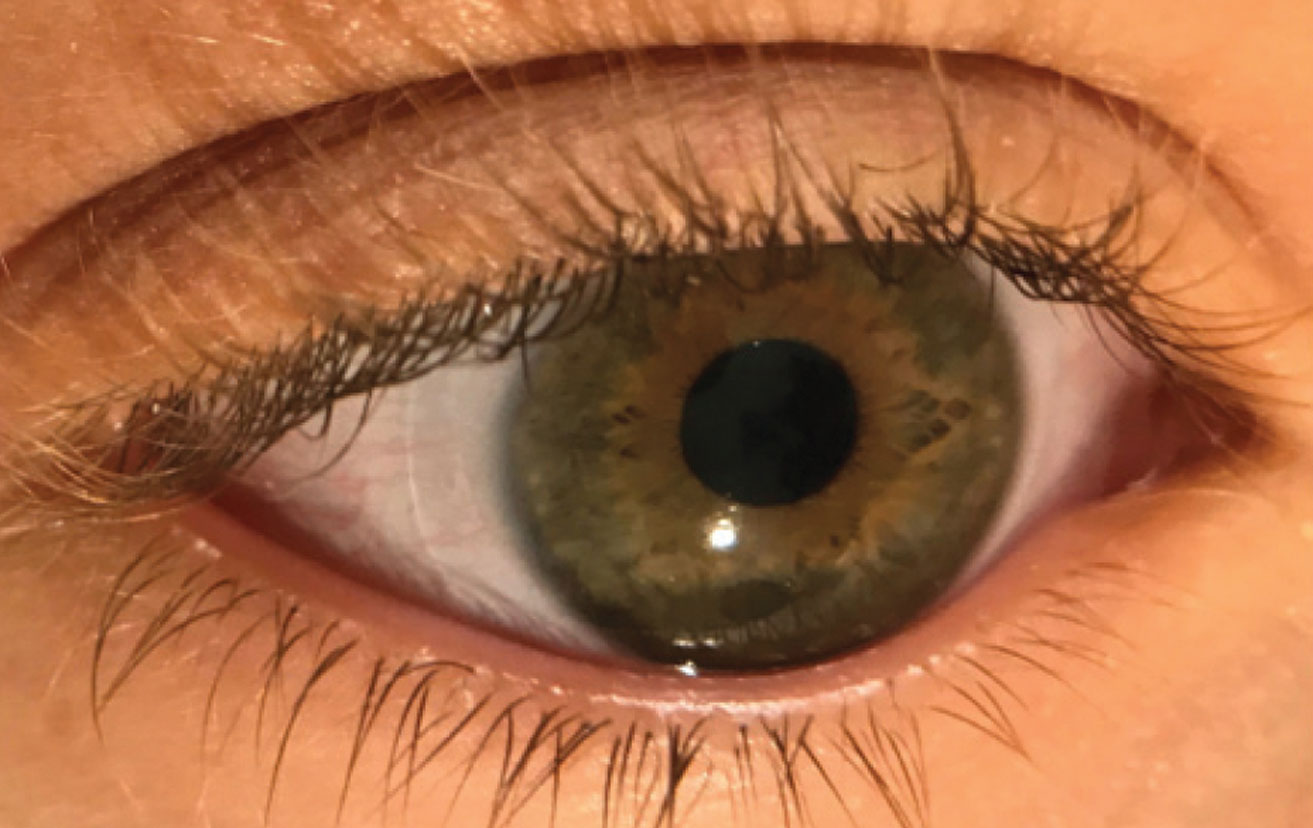 |
| This patient’s larger-than-average horizontal visible iris diameter led to contact lens intolerance with traditional soft lenses. Her OD took the time to design a toric lens with an increased diameter, which did the trick. Photo: Vivian Shibayama, OD. Click image to enlarge. |
The Price Isn’t Always Right
If practitioners are tempted to compete on price with online entities and big box stores, they should know it may be an unwinnable fight, the experts warn.
Optometrists can address three key features when structuring their contact lens practice, according to Dr. Fischer: fast, cheap and quality. “The catch is, we can only choose two. If we choose fast and cheap, we sacrifice quality,” he says. “As a business model, fast and cheap can be successful; however, as a medical provider dealing with something as vital as my patients’ eyes and vision, quality eye care is not something I am willing to sacrifice.”
Remember that someone else will always be faster and cheaper than you, says Stephanie Woo, OD, of Havasu Eye Center in Arizona. Additionally, you will lose if you’re trying to compete for patients who are looking to get the cheapest price. Instead, be known for your high level of customer service and instrumentation, and patients will find great value in that, she says.
Dr. Miller agrees that it’s a mistake to chase online outlets. “That’s a bad race to the bottom, and patient service has to be sacrificed in order to chase that lower price.”
When price really is an issue, patients are more inclined to try specialty lenses if they can get help from their insurance, so Dr. Fischer suggests becoming familiar with the rules of individual insurance plans.
Think Like AmazonSavvy doctors should expand their thinking on ways to compete with 1-800 Contacts other than price, Dr. Gerber says. Instead of focusing on the lenses, the practice management expert suggests paying attention to the event, experience and everything else that surrounds the delivery of the contact lenses. “Think about how online retailers compete with each other. Amazon isn’t always the lowest price provider, but they make it so easy to order and reorder and return things, that it’s tempting to not even bother shopping for a better price,” Dr. Gerber says. Doctors should make their patients’ contact lens experience—both online and in the office— “Amazonian” to mitigate price pressure from competitors. “This goes for everything in their offices, not just specialty lenses,” he says. |
Find Your Followers
One of the simplest ways to open your patients’ eyes to specialty lenses is just by mentioning the option when they are in the chair. Once you have their interest, you have to demonstrate that you are well versed on the latest lens technologies.
“Talk about the lenses and always do what’s best for the patient, regardless of your perception of the patient’s ability or willingness to pay for them, which is often a barrier to doctors having the discussion in the first place,” says practice management expert Gary Gerber, OD, of The Power Practice.
When fitting multifocals, for example, Dr. Woo will ask patients if they would be willing to try a lens that allows them to see distance and near without reading glasses, and she finds most of the time, patients are excited to try them.
Mentioning specialty lens options in the exam room is part of the routine for Dr. Fischer. “Specialty lenses do not require ‘special’ eyes. Specialty lenses are great for normal corneas and those wanting higher quality vision. Patients with moderate to high astigmatism and higher prescriptions make great specialty lens candidates.”
He also encourages optometrists to get outside of their comfort zone and take the plunge into specialty lenses. “Being able to fit contact lenses well comes with experience, and the more specialty lenses they fit, the more comfortable they become. There are many tools, webinars, resources and conferences that provide fantastic guidance on how to succeed with specialty lenses.
 |
| A smart OD resolved this patient’s daily rigid GP lens awareness by piggy-backing a GP lens on top of a silicone hydrogel lens. Photo: Suzanne Sherman, OD. Click image to enlarge. |
Troubleshooting
The number one fitting mistake is not following the proper fitting guides, according to Dr. Miller. Many doctors try to use their experience and make adjustments that could lead them in the wrong direction, he says. Easy steps doctors can take to better ensure their success with specialty lenses is being up-to-date with the newest technologies, not masking astigmatism and being a strong advocate of the newest lens options, he says. “Additionally, many doctors remember that one patient who was a challenging multifocal fit instead of remembering the many other patients who loved the technology.”
Also, be crystal clear on who would be a good candidate. Poor candidates, Dr. Woo says, include patients who want pristine vision at all distances; have unrealistic expectations such as demanding 20/15 vision at far and near but never want to wear glasses again; have failed in soft contacts due to dryness; or have ocular surface disease or other ocular pathologies.
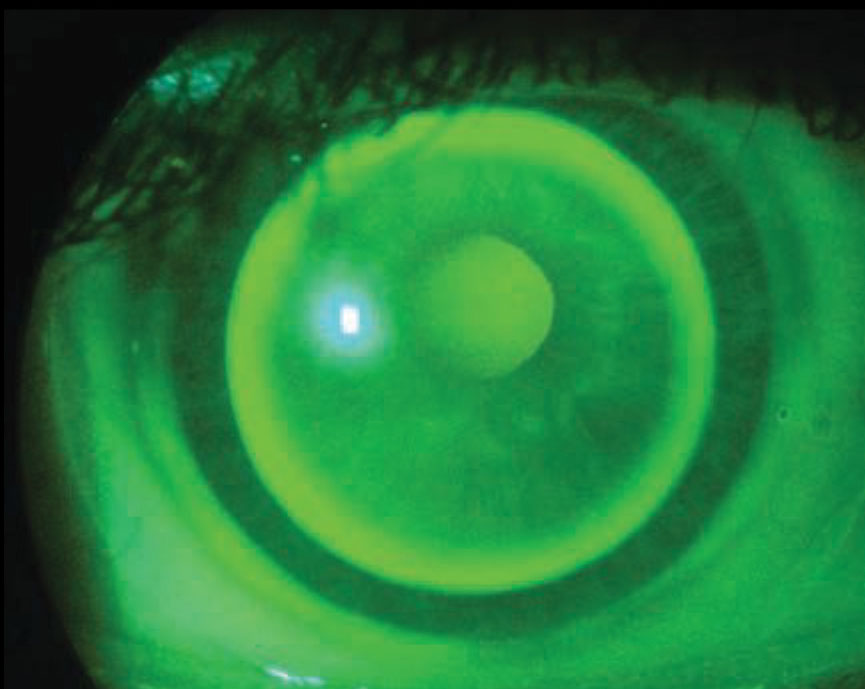 |
| This competitive athlete was not happy with his fluctuating vision in standard soft toric lenses. A hybrid lens that provided GP optics without lens rotation or dislodgement gave him comfortable 20/15 vision in each eye. Photo: Robert Ensley, OD. |
Jump into Multifocals
For early presbyopes who haven’t worn contacts, optometrists may be more inclined to first introduce them to a single vision lens before graduating them into a multifocal. But experts say this may be a misguided approach that could hamper contact lens success.
“I jump right into multifocal lenses,” Dr. Miller says. “It is easier to introduce multifocal contact lenses when patients first start noticing symptoms.”
Dr. Fischer follows the same approach. “These patients are in our chair with near complaints, and fitting them into distance contacts does not solve that problem. Multifocals provide an option to correct for both distance and near. Additionally, I find transitioning a patient into multifocals as an emerging presbyope is much easier than waiting until they have no accommodation left. For me, the earlier, the better.”
Early presbyopes are some of the easiest patients to fit with multifocals, with the exception of those patients who are in “presybopic denial,” Dr. Gerber adds.
As 1-800 Contacts and other discount lens entities continue to infiltrate the marketplace, ODs have an opportunity to differentiate themselves by focusing on what they do best: providing quality, specialized eye care. Given today’s contact lens advancements, that includes offering access to a variety of specialty lens modalities to meet the visual needs of each and every patient.
1. Multi-sponsor Surveys, Inc. 2015 Gallup Study of the U.S. Multi-Focal Contact Lens Market. October 2015; Princeton, NJ. 2. Bausch & Lomb’s Innovation Index, 2015. 3. Jobson Optical Research 2015. |
